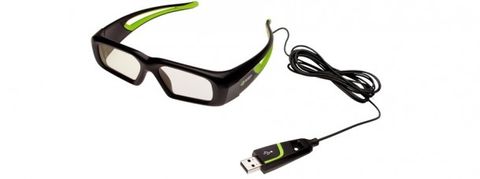PC Gamer's got your back
Although I'm a little sick of 3D hype, I have to admit that gaming in 3D is more immersive, more tactile, and generally a lot of fun. Nvidia must agree, as it's expanding its 3D Vision line with a less-expensive wired model of its 3D glasses. That lower price comes hand in hand with easy setup—as long as you've got the necessary components (3D Vision-ready monitor, Nvidia GeForce video card, up-to-date drivers) the glasses are pretty much plug-and-play.
Most games work with very little configuration, but some, like Deus Ex: Human Revolution, simply will not run with Nvidia's 3D Vision (thanks to an exclusive deal for AMD's 3D products; you can check Nvidia's site for a mostly comprehensive list of which games will work). And as with most 3D hardware, 3D Vision effectively halves your monitor's brightness, meaning you won't want to use it in a well-lit room.
The glasses themselves are largely the same as the wireless version, though the build quality is noticeably cheaper on the wired model. The set is matte instead of shiny, has more visible seams, and just generally feels a bit more plasticky than the wireless version. The wire is a long 10 feet and never left me feeling overly tethered, though it did have an unfortunate tendency to get tangled up.
The glasses come with swappable nose-pads, but even with them, I've never found the 3D Vision set to be very comfortable. Also, as with most active shutter glasses, the lenses are pretty narrow, which means they intrude on my peripheral vision more than I'd like.
At $99, the wired 3D Vision glasses are two-thirds the price of the wireless alternative. I'm not crazy about the build quality or design, but the 3D technology is a lot of fun, and these glasses are the cheapest, fastest way to get it on your PC.

